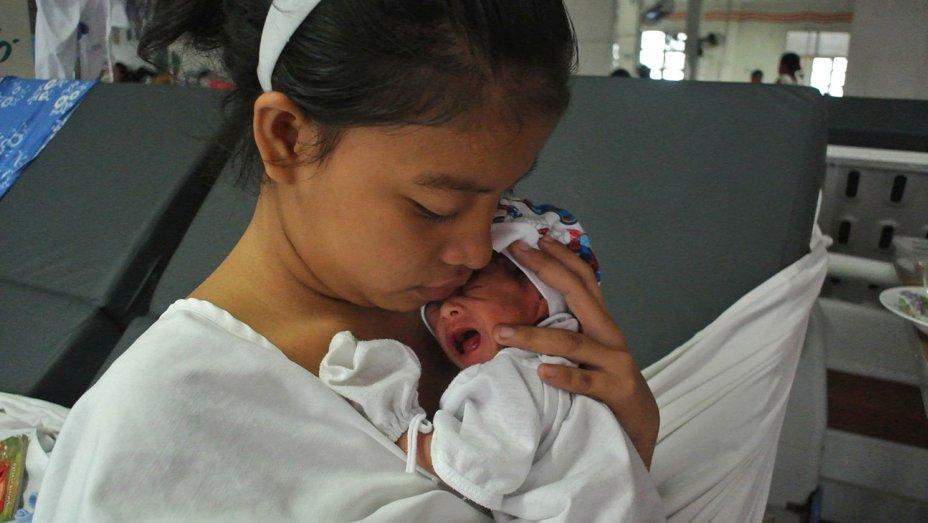Motherland
Director: Ramona S. Diaz.
Watched on: Amazon Prime.
Rating: 3.5/5.
Motherland is a straightforward cinema verité excursion into the world’s busiest maternity hospital. It will remind viewers of Frederick Wiseman’s hands-off approach, but it is so much more absorbing and audience friendly than the legendary director’s lengthy and–dare I say it–often monotonous observational panoramic takes on institutions and communities. Motherland portrays a community as well, but it is an exclusive one, comprised mostly of young mothers, nurses, doctors and the occasional visiting fathers.
The hospital is in Manila. Its vast stable of beds are lined up warehouse-style. Announcements are made over loudspeakers. Fans cool the new moms. Family planning counselors attempt to encourage them to receive IUD implants. The moms are young, mostly in their twenties, with several hungry children already at home. A 24-year old has five kids; a 26-year old has six; a slightly older mom is breastfeeding her seventh.
A few of the women emerge as characters, as do a couple of the stern doctors who patrol the floor, admonishing women to keep track of their babies, eat their meals, and settle in for a long haul. Because of chronic poverty and the malnutrition that goes along with it, many of the babies are born premature. Mom and infant are not expected to leave until the baby’s health is cleared. In its own matter-of-fact, tough love way, the hospital is a place of compassion and rest in an extremely chaotic city.
The dads don’t appear until halfway through the film. But instead of the disinterested, distracted men you expect, they turn out to be surprisingly tender with their newborns. Their conversations revolve around finding enough odd jobs to pay the bills and feed their brood at home.
It is the random eavesdropping on private conversations and off-hand exchanges that pull you into the film. Diaz shot with two female cinematographers, and they gather close enough to their subjects to make you think you’re sitting on the edge of the bed with them. There are none of the usual documentary flourishes–music, on-screen text, scene setting vistas of the Philippines–to distract from the temporary amity these women build to endure their stay. Yet there is an undercurrent of sad hopelessness running through the movie. So many young moms, so many children, so little money, so little chance these parents and their children can lead lives other than ones of constant toil and ill health.
Women can go to prison for having an abortion in the country, where more than 86% of the population is Roman Catholic. You won’t learn that from watching the film, but you will learn that even though contraception is legal, many of the mothers refuse it. Why? Motherland is frustrating in this regard. The offers for free IUDs are met with almost mute refusals, the women waving them away for reasons one assumes having to do with familial expectations or fear. In this sense, our sympathy for the characters in Motherland can only go so far.

